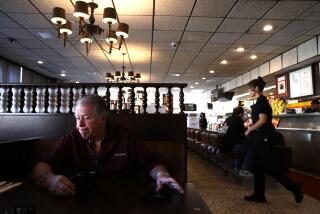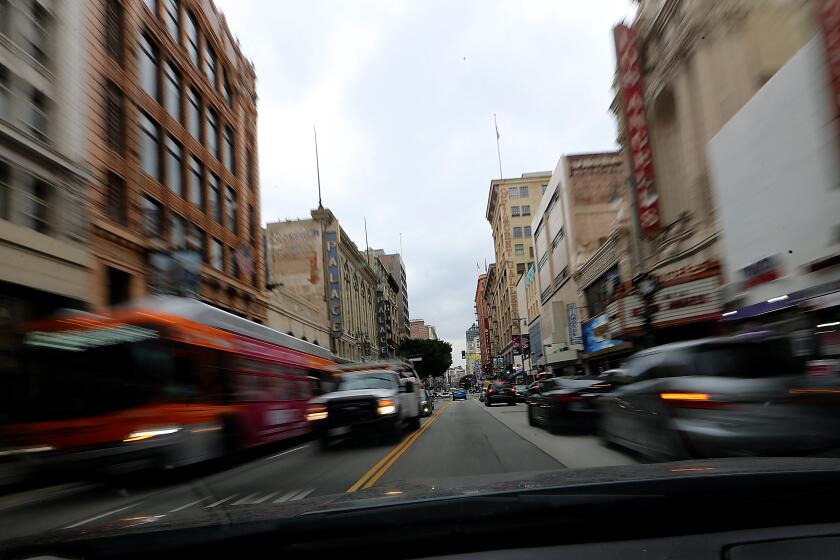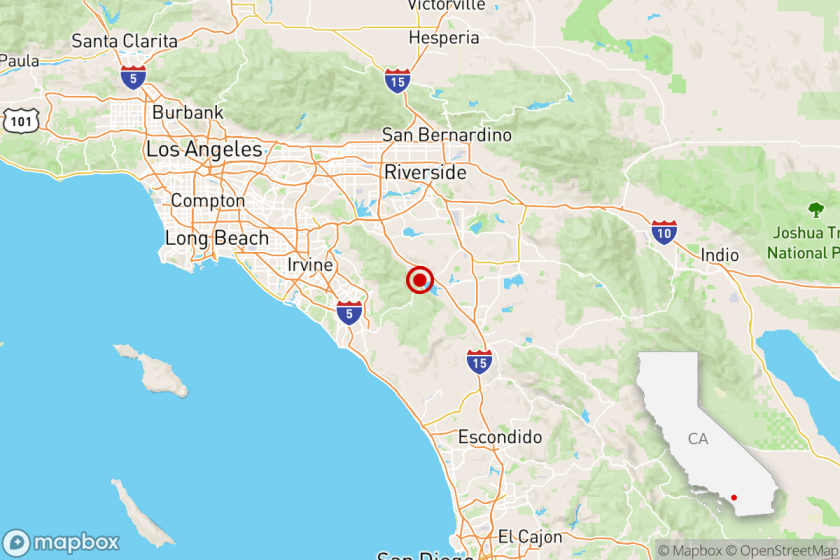4 Years After Quake, Repaired Landmarks to Reopen
With the cracks filled in its original adobe bricks, a fresh coat of turquoise paint on its ornate Victorian balcony and newly installed girders and bolts, the historic Lopez Adobe will reopen Thursday almost four years after suffering extensive damage in the Northridge earthquake.
San Fernando officials are planning a large fete to celebrate the reopening of the local landmark, which, despite being among the youngest of the Valley’s adobes, is also one of the most historically significant.
“We’ve been working pretty hard to get it back in shape,” said Carolyn Riggs, the adobe’s nonagenarian volunteer curator. Riggs has visited the house almost daily since August, unpacking and arranging its treasure trove of antique furnishings and memorabilia.
“If it wasn’t a labor of love, then I don’t think it would have ever gotten done,” she said.
In March 1995, the city hired a historic preservation firm to do an inventory of the building’s furnishings. The contents then were packed and placed in storage in anticipation of impending repairs.
But officials from the Federal Emergency Management Agency disputed the city’s $230,000 estimate of repair costs and seismic upgrades, and work was delayed.
In April 1996, FEMA and city officials finally agreed on quake-repair funding of approximately $100,000, considerably less than the nearly $200,000 eventually spent on the work, said Ed Montan, director of the city’s Recreation and Community Service Department. City funds covered the rest of the cost.
In addition to the seismic work, construction crews repaired the adobe’s roof, replaced its collapsed chimney, repaired cracks, installed new electrical wiring and replanted the grounds, Montan said.
“They did a very good job. It will probably be the safest place in town during the next earthquake,” Montan said.
Beginning at 6 p.m. Thursday, a free celebration featuring music, dancing and refreshments will welcome the public back to the 115-year-old home of Geronimo and Catalina Lopez, who were among the Mexican elite who helped settle the Valley.
Stepping into the museum-like interior of the adobe, visitors are quickly transported into the world of turn-of-the-century California.
In 1861, the Lopezes purchased 40 acres of land near the San Fernando Mission and built a large adobe home along the Butterfield Stage line. The line served as the main route between Los Angeles and San Francisco until it was replaced by the railroad in 1874.
At Lopez Station, as the adobe came to be known, the couple opened a general store, the Valley’s first post office and established its first newspaper, the San Fernando Times. The Valley’s first English-language school also was established at Lopez Station.
Even before Lopez Station, though, the couple was well-known in the area.
In 1847, as a 16-year-old messenger for Gen. Andres Pico, Geronimo delivered the Articles of Capitulation to Gen. John C. Fremont, ending the war between Mexico and the United States. Catalina, who was noted as a gracious hostess and for her love of gardening, had grown up at the Mission, where her father once served as major-domo.
A larger adobe, the one that still stands, was built by Catalina’s brother in 1882-83 using 24-by-6-inch, sun-baked blocks. Outside, the house is a fusion of the North American Colonial style with Mexican adobe construction. A carved turquoise balcony, however, reveals Catalina’s preference for the Victorian fashion of the day and gives visitors a hint of what they can expect inside.
“She was up-to-date. Catalina had a lot of friends up north, and as fast as something came to San Francisco she would know about it,” Riggs said. “She told her brother to go ahead and build it in a modern style, but out of adobe, because that’s what they had available.”
The city purchased the home from Lopez descendants in 1971 to save it from destruction. It was refurbished shortly afterward.
Riggs, who fondly recalls afternoon teas in the parlor of the adobe with some of the Lopezes’ nine daughters (they had four sons as well), used her connections with some of the Valley’s pioneer families to acquire many of the antiques that fill the home.
Pulling back a protective plastic sheet, she proudly showed off the adobe’s latest acquisition, an 1876 rosewood baby grand piano “in excellent condition except for one broken key.”
The older portion of the house is filled with Victorian furnishings, much of it from the Lopez family, while the newer rooms contain display cases and cabinets holding a wealth of items, all donated, related to Valley history.
Although several items from the collection disappeared between the time the items were stored and when they were returned, Riggs said, the house remains filled from wall to wall.
Curiosities include everything from a dress worn to Abraham Lincoln’s funeral and a banner commemorating the San Fernando Thanksgiving Day 1912 road race to an accounting ledger from Maclay Rancho, a prominent ranch and supplier of goods, open to the page of the Lopez family account.
Riggs, who turned 90 in October, has no plans to relinquish her responsibilities now that the old adobe is back in shape.
“They’d have to ask me to give it up, I guess,” she said. “I like this place because it reminds me of my grandmother’s house in San Diego when I was a girl.”
More to Read
Sign up for Essential California
The most important California stories and recommendations in your inbox every morning.
You may occasionally receive promotional content from the Los Angeles Times.






